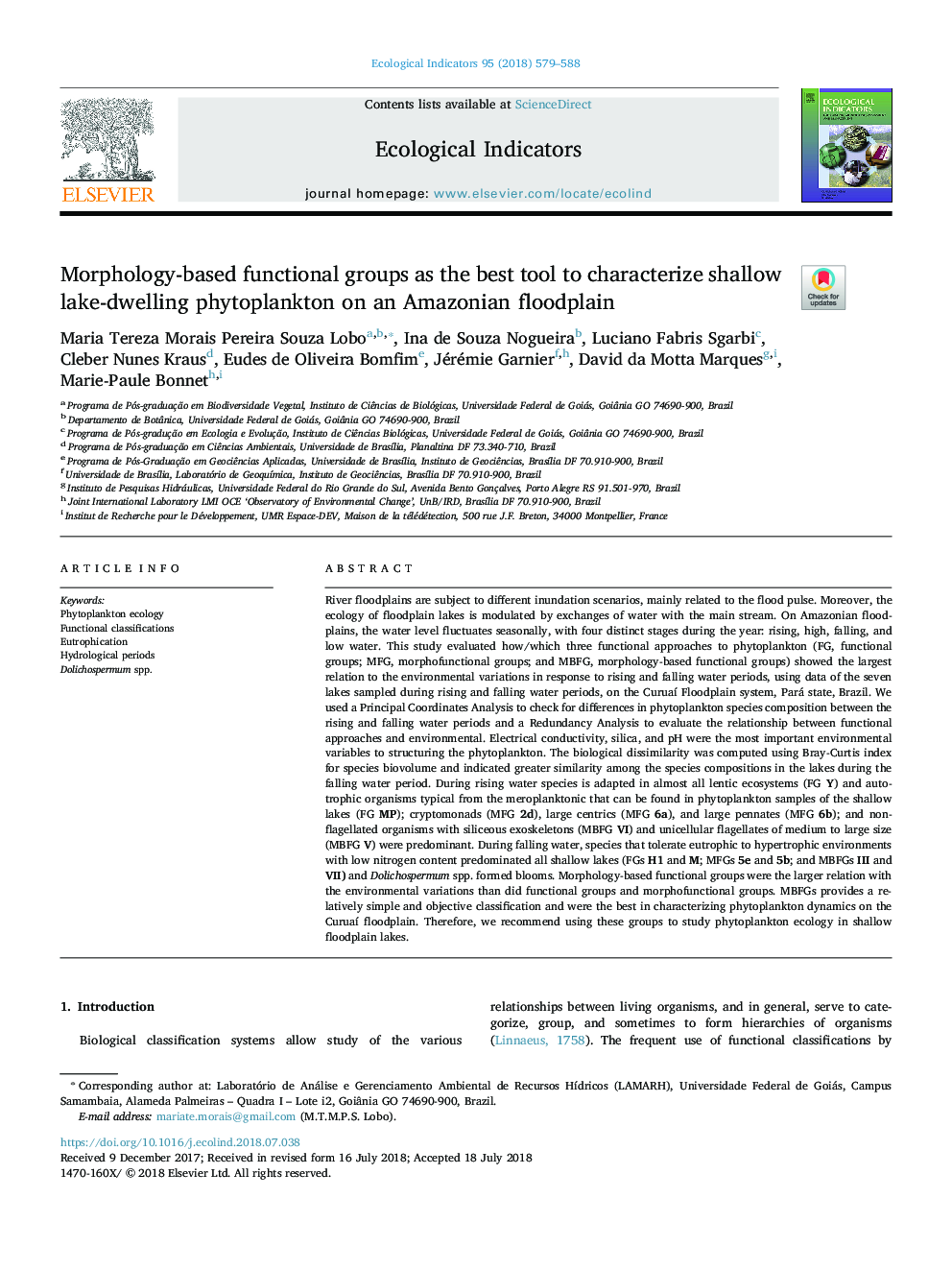| کد مقاله | کد نشریه | سال انتشار | مقاله انگلیسی | نسخه تمام متن |
|---|---|---|---|---|
| 8845002 | 1617107 | 2018 | 10 صفحه PDF | دانلود رایگان |
عنوان انگلیسی مقاله ISI
Morphology-based functional groups as the best tool to characterize shallow lake-dwelling phytoplankton on an Amazonian floodplain
ترجمه فارسی عنوان
گروه های عملکردی مبتنی بر مورفولوژی به عنوان بهترین ابزار برای توصیف فیتوپلانکتون های کم عمق دریاچه در یک سواحل آمازون
دانلود مقاله + سفارش ترجمه
دانلود مقاله ISI انگلیسی
رایگان برای ایرانیان
موضوعات مرتبط
علوم زیستی و بیوفناوری
علوم کشاورزی و بیولوژیک
بوم شناسی، تکامل، رفتار و سامانه شناسی
چکیده انگلیسی
River floodplains are subject to different inundation scenarios, mainly related to the flood pulse. Moreover, the ecology of floodplain lakes is modulated by exchanges of water with the main stream. On Amazonian floodplains, the water level fluctuates seasonally, with four distinct stages during the year: rising, high, falling, and low water. This study evaluated how/which three functional approaches to phytoplankton (FG, functional groups; MFG, morphofunctional groups; and MBFG, morphology-based functional groups) showed the largest relation to the environmental variations in response to rising and falling water periods, using data of the seven lakes sampled during rising and falling water periods, on the Curuaà Floodplain system, Pará state, Brazil. We used a Principal Coordinates Analysis to check for differences in phytoplankton species composition between the rising and falling water periods and a Redundancy Analysis to evaluate the relationship between functional approaches and environmental. Electrical conductivity, silica, and pH were the most important environmental variables to structuring the phytoplankton. The biological dissimilarity was computed using Bray-Curtis index for species biovolume and indicated greater similarity among the species compositions in the lakes during the falling water period. During rising water species is adapted in almost all lentic ecosystems (FG Y) and autotrophic organisms typical from the meroplanktonic that can be found in phytoplankton samples of the shallow lakes (FG MP); cryptomonads (MFG 2d), large centrics (MFG 6a), and large pennates (MFG 6b); and non-flagellated organisms with siliceous exoskeletons (MBFG VI) and unicellular flagellates of medium to large size (MBFG V) were predominant. During falling water, species that tolerate eutrophic to hypertrophic environments with low nitrogen content predominated all shallow lakes (FGs H1 and M; MFGs 5e and 5b; and MBFGs III and VII) and Dolichospermum spp. formed blooms. Morphology-based functional groups were the larger relation with the environmental variations than did functional groups and morphofunctional groups. MBFGs provides a relatively simple and objective classification and were the best in characterizing phytoplankton dynamics on the Curuaà floodplain. Therefore, we recommend using these groups to study phytoplankton ecology in shallow floodplain lakes.
ناشر
Database: Elsevier - ScienceDirect (ساینس دایرکت)
Journal: Ecological Indicators - Volume 95, Part 1, December 2018, Pages 579-588
Journal: Ecological Indicators - Volume 95, Part 1, December 2018, Pages 579-588
نویسندگان
Maria Tereza Morais Pereira Souza Lobo, Ina de Souza Nogueira, Luciano Fabris Sgarbi, Cleber Nunes Kraus, Eudes de Oliveira Bomfim, Jérémie Garnier, David da Motta Marques, Marie-Paule Bonnet,
